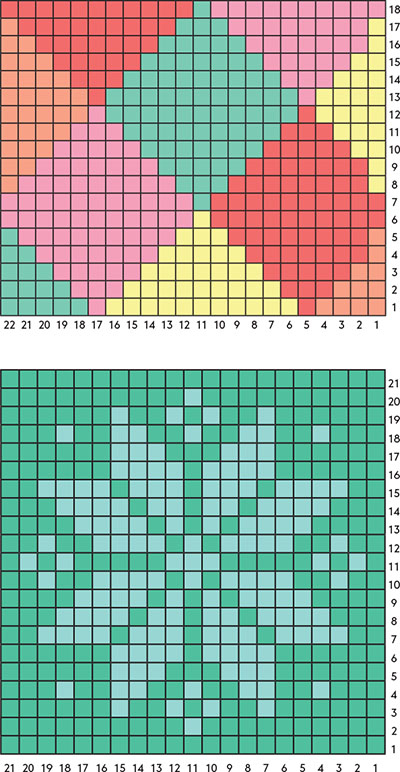
Colourwork falls into two distinct categories, Intarsia and Stranded. Both create patterns in your work but are worked differently to each other and each serves a different purpose.
Both styles of colourwork are usually worked from a chart which makes it easy to see where colour changes are to be made (see Reading Patterns and Charts).

Intarsia is used to create patterns or pictures with multiple colours or for large areas of single colour where it is not practical to carry the unused colour across the back of your work.
A separate bobbin for each colour is used with only one colour used at a time, while the inactive colour is left hanging until the next colour change.
Before you begin, refer to Change Colour – Mid Row in the Changing Colour section.
To begin, wind yarn onto bobbins for each separate area of colour. If the same colour appears twice (or more) in each row then a separate bobbin for each area of colour will be needed.
Using the first colour on the chart design, work the required number of stitches.
Change to the next colour, wrapping the working end of the new colour under the previous colour. Drop the first colour and continue working in new colour for the required number of stitches. Return as normal, changing colours as they appear.


Often referred to as Fair Isle in knitting, this style of colourwork is used to create small repeating patterns, usually using only two colours at a time. The unused colour is carried behind the work, creating ‘floats’ of yarn, and creates a thicker fabric due to the carried yarn.
Stranded colourwork is best worked in Tunisian knit stitch as it gives width to each stitch, creating a more realistic representation of the design, however it can also be worked in Tunisian simple stitch, which will result in a narrower design.
Before you begin, refer to Change Colour – Mid Row in the Changing Colour section.
ANOTHER WAY TO ADD COLOURWORK TO YOUR PROJECTS IS TO ADD A DESIGN WITH DUPLICATE STITCH (SEE EMBELLISHMENT).
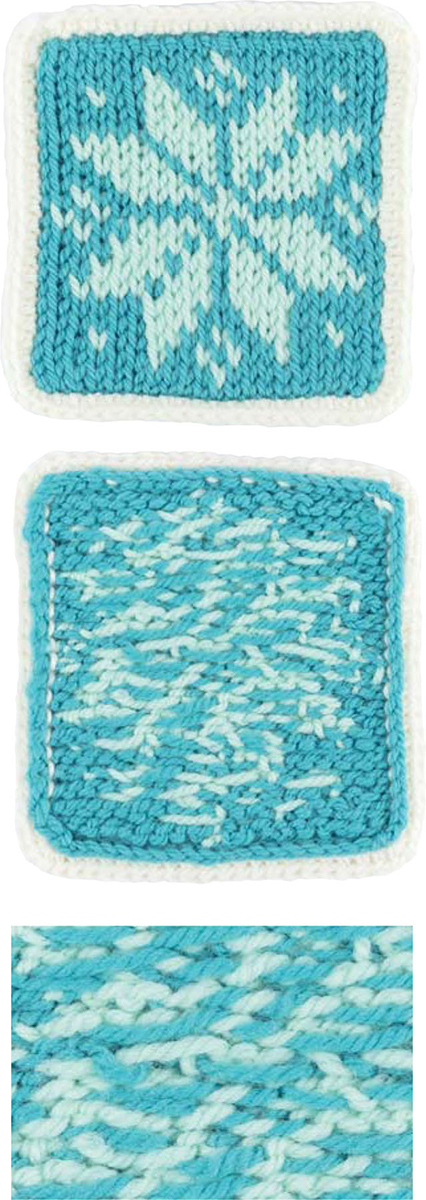
It is important to keep the tension of the unused yarn loose as it is carried across the back of your work. Ideally, you should be able to insert the tip of your little finger under the carried loop of yarn.
You also don’t want long stretches of unused yarn running behind your work. To avoid this, it is advisable to ‘lock your float’ every 2-3 stitches or so.
To lock the float, wrap the unused yarn around the working yarn before continuing, making sure it is not pulled too tight. This locks the unused yarn in place and should appear as a small loop at the back of your work.
Using the first colour on the chart design, work the required amount of stitches.
Change to the next colour, wrapping the working end of the new colour under the previous colour, and continue working in the new colour, carrying the unused yarn behind your work and locking the float every 2-3 stitches.
Return as normal, changing colours as they appear and locking floats the same way as in the forward pass.
At the beginning of the return pass, yarn over with new colour and pull through first loop on hook, then continue return pass as usual with the new colour.

On the final 2 loops of the return pass in the row before you wish to change colour, yarn over with the new colour and pull through the last 2 loops (one loop left on hook in new colour). Continue working next forward pass in new colour.
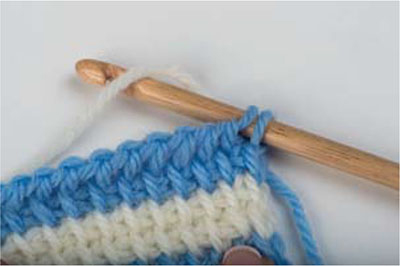
This type of colour change will be used in both intarsia and stranded colourwork. However, the way that you treat the unused colour differs. Refer to the instructions relevant to the type of colourwork you are doing.
On the forward pass, work up to the point where a colour change is required, insert hook in next st, yo in new colour, work required number of stitches in new colour.
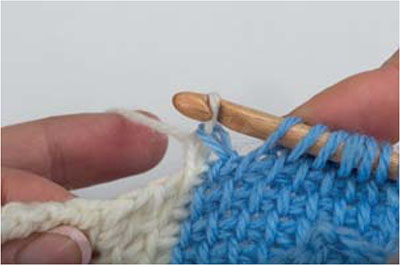
On the return pass, work as normal until there is one loop of the contrast colour left on the hook, yo in new colour and continue return pass as usual.
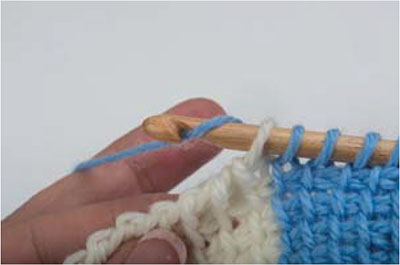
When working in stripes, instead of cutting the unused colour each time, you can carry it up the side of your piece by wrapping the unused colour over the top of the working colour before completing the next stitch. This draws the unused yarn up a row and locks it into place.